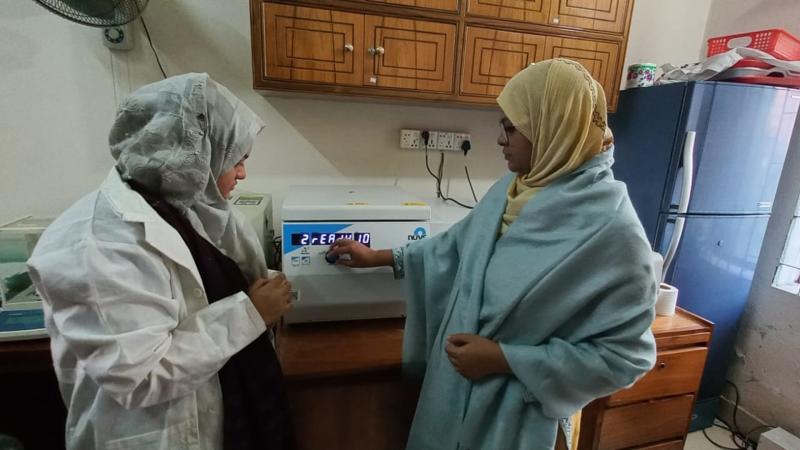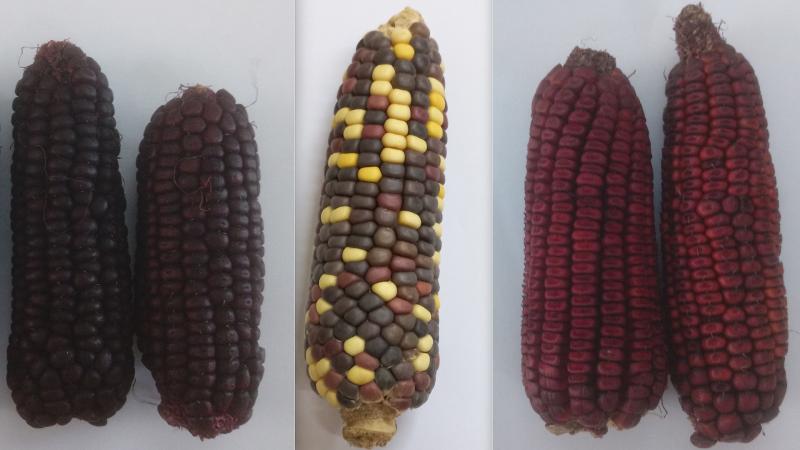Early in her scientific career, food chemist Ashrafi Hossain of Bangladesh developed an interest in the nutritional properties of food, specializing in techniques to spot, extract and characterize healthy components.
After receiving a TWAS-Sida grant for individual scientists (2021), she is expanding her studies to investigate the nutritional properties of local maize. She wants to identify compounds called anti-nutrients, substances that interfere with the absorption of other essential minerals when eaten. Another goal is also to eliminate those disturbing components from Bangladeshi maize varieties, and obtain better food for her people.

The grants are made available by a long-time partnership between TWAS and the Swedish International Development Cooperation Agency—or Sida—which began in 1991. Since then, the Agency has become an essential supporter of TWAS programmes, enabling the establishment of the TWAS Research Grants Programme, among the most successful programmes benefitting developing-world scientists.
"The TWAS-Sida grant was an invaluable aid for my career: I could buy costly chemicals and continue my research," said Hossain. She is now a professor in the Department of Biochemistry and Molecular Biology, Sher-e-Bangla Agricultural University in Dhaka City, Bangladesh.
Sida-supported grants are a vital incentive to the careers of individual scientists and research groups from the 66 science- and technology-lagging countries identified by TWAS. These awards allow scientists working under disadvantaged conditions to purchase the research equipment they need, publish their research, train more early-career researchers, and enhance their productivity.
Since the beginning of the programme, TWAS has bestowed 2,763 research grants to scientists from developing countries. Most of them fuel scientific research in the Least Developed Countries.

The Sida grant is the second time Hossain received support from TWAS. In 2012 she received a CSIR-TWAS Postgraduate Fellowship Award from the Council of Scientific and Industrial Research (CSIR) of India and UNESCO-TWAS.
Health is in the colour
Maize is an essential staple food and an important dietary source for 4 billion people. It is rich in carbohydrates, protein, fibres, vitamins, and contains flavonoids, substances with well-documented anticancer properties. However, not all the maize varieties are the same. Scientists found that the nutritious properties and health benefits vary with the colour of the kernels, which may range from white, to yellow, red, blue and purple.
"In Bangladesh, we normally grow and eat yellow maize, but we also have local varieties with different pigmentation that are proving better for human health," said Hossain.
The outer colour is not just an aesthetic feature. Pigmentation is also strictly associated with the presence of substances that are beneficial to the consumers’ health.

Pigmented grains, in fact, contain different types of 'antioxidant' molecules that contribute to the prevention of several diseases. These include cancer, cardiovascular diseases, different types of inflammation, obesity and diabetes. Since the substances' concentration may vary a lot according to the variety, Hossain wants to find the best concentrations in the available local varieties.
She plans to study other elements such as the fibre content, and the starch properties.
"The outermost layer that forms the skin of each grain is important for its higher fibre content, minerals and antioxidants," explained Hossain. Dietary fibre, a non-digestible form of carbohydrate, helps prevent cardiovascular diseases and obesity. But, if present in excess, it may turn into an anti-nutrient, because it lowers iron uptake during a meal. "There are other anti-nutrient factors, like phytic acid, which affect the availability and absorption of essential minerals, such as calcium and zinc," she added.
Even the chemical structure of starch, a basic maize component, is a critical factor, as it may impact food preparation and digestion. Based on the starch chemical properties, different types of maize, defined as waxy and normal, are used for different purposes. Therefore, It’s important to identify which maize type one has before deciding the final use. Industries increasingly utilize waxy starch to produce adhesives, thickeners, stabilizers, and food additives.
Recently, Hossain published a paper that focuses on a neglected issue: the alterations maize undergoes during its processing. She proved that infrared heating increases both the antioxidant properties of the final product and the availability of flavonoids, molecules that have anticancer effects. In addition, the practice enhances storage duration at room temperature, and how likely potential consumers are to accept the maize as part of their diet.

Benefits for the society
Hossain's research seeks to provide a clear picture of the nutritious features of indigenous varieties of maize. "I want to identify the best local varieties to boost the cultivation of Bangladeshi native species," she said. "In the near future, I will focus on the formulation of more nutritious and digestible food. This will bring benefits to our society, and align us with the UN Sustainable Development Goals 2 and 3, which focus on eliminating hunger and promoting good health and well-being by 2030."
Hossain said that receiving Sida's support has increased her reputation by enriching her academic profile and granting her more attention from the scientific community. But others are benefitting from it as well.
"This grant paved the way to the setting up of my own lab, and the mentoring of four master's students. Two of them have already submitted their thesis and are ready for a PhD."
Cristina Serra

